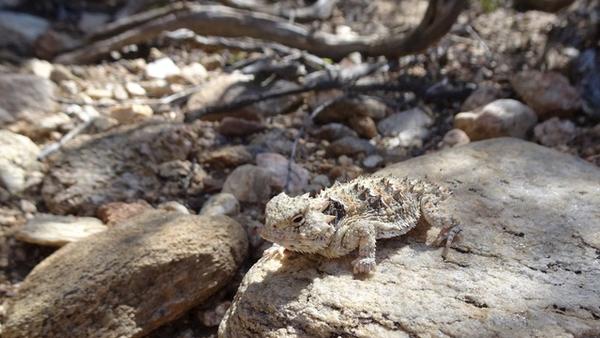The benefit of common names versus Latin names
The naming of species is a critical task allowing us (naturalists and community scientists and other scientists) to know what we are talking about when we say we saw a blue bird today. But was it a Western or an Eastern Bluebird, or was it a Blue Jay, a California Scrub-Jay, Woodhouse’s Scrub-Jay, a Stellar's jay, a Pinyon Jay, an Island Scrub-Jay, or a Mexican Jay? All are predominantly blue, but getting the name right is important to documenting how species are responding to changes in their habitat, what is happening due to climate change, what species are broadly ranging and common, and what species are rare, threatened and in need of special protection.
Carl Linnaeus developed the Latin binomial (Genus and Species) system in part because not everyone speaks English as their first language, and many don’t speak English at all. Every local, indigenous tribe had their own names for the plants and animals within their territory, but the next tribe over the hill or across the river could have different names for the same species.
Linnaeus’ goal was to provide names that everyone could and would use to recognize what species was where. Linnaeus was a Swedish botanist and so he might have named everything in Swedish, leaving we non-Swedish speakers in the dark when describing some animal or plant they saw on a recent exploration of the countryside. About that time, the French were lobbying to make their language the standard for world-wide discourse (lingua franca). Rather than select any one of the multitude of worldwide languages, Linnaeus chose a “dead” language, Latin, so as not to give priority to any of the emerging and ever-changing political powers of the world.
Latin binomials aim provide a taxonomic context for a species’ “next of kin” and ideally, while unfortunately requiring a rudimentary knowledge of Latin or Greek, providing something about the character of the species (Phrynosoma platyrhinos; related to all other horned lizards [Phrynosoma] — toad-shaped — flat and rough skinned [platyrhinos]: desert horned lizard). Sometimes the species-half of the binomial identifies who first brought that species to the attention of western science (or who paid their way or inspired them): Phrynosoma blainvillii, Blainville’s horned lizard, was named in commemoration of Henri Marie Ducrotay de Blainville, a French zoologist, who may have never seen a horned lizard. I am personally not really a fan of naming species after people, as it can imply that the named person discovered that species, ignoring that the indigenous folks who lived there were almost certainly quite aware of that species’ existence long before western science “discovered" it.
Vernacular (common) names can provide a geographic context (Coachella Valley milkvetch, Coachella Valley fringe-toed lizard, desert horned lizard, etc.) and/or a mental image of the species (scarlet bugler, scarlet monkey flower, rush milk weed, and so on). Both are useful, but go to Russia, or Senegal, or Thailand, or the Hopi or Navajo Nations in Arizona, and their common names will sound very different to our ear.
What currently is so interesting, exciting and quite frustrating is that with advances in genetic analyses, the taxonomic context for many species is changing, and so then is their Latin binomial. Keeping up with theses changes is challenging. What shouldn’t change is the common/vernacular name, but sometimes it must. Sometimes the genetic analyses identify what was previously thought to be a wide-ranging species, is actually two or more similar-looking but genetically distinct species. A bird I learned 45 years ago as the Solitary Vireo, Vireo solitarius (I think so-named because their song could be interpreted as a mournful asking and then answering its own question, “is it? ... it is," repeated again and again) is now divided into the Cassin’s, Plumbeous, and Blue-headed Vireo, (Vireo cassinii, V. plumbeus, and V. solitarius). Cassin’s is the species we typically see in California.
Similarly, what I had learned as a scrub-jay now can be a California, Woodhouse’s, Island, or Florida Scrub-Jay. Of these the Florida Scrub-Jay is critically endangered, and the Island Scrub Jay is limited to a very small island off the coast of Santa Barbara. Lumping them all together could support an argument in Florida that there is no need to halt the next planned subdivision of Florida’s last interior shrublands because those jays are as “common as dirt” in California. What we now know as Blainville’s horned lizard used to be called the Coast horned lizard, Phrynosoma coronatum ("crowned”), that extended from north of Fresno to the tip of Baja California Sur, Mexico. But the genetics now tells us that what was once thought to be a single species is actually three species. Coronatum is now only in Baja’s Cape region, and Blainvillii is mostly north of the U.S.- Mexico border.
What’s in a name? ... a rose is a rose ... but it does matter, especially now in the changing climate and all that means to the existence of the human and non-human inhabitants of this planet. And a common way of naming species is central to that need.
“The more science belongs to all of us ... the less likely it is to be misused” — Neil deGrasse Tyson
